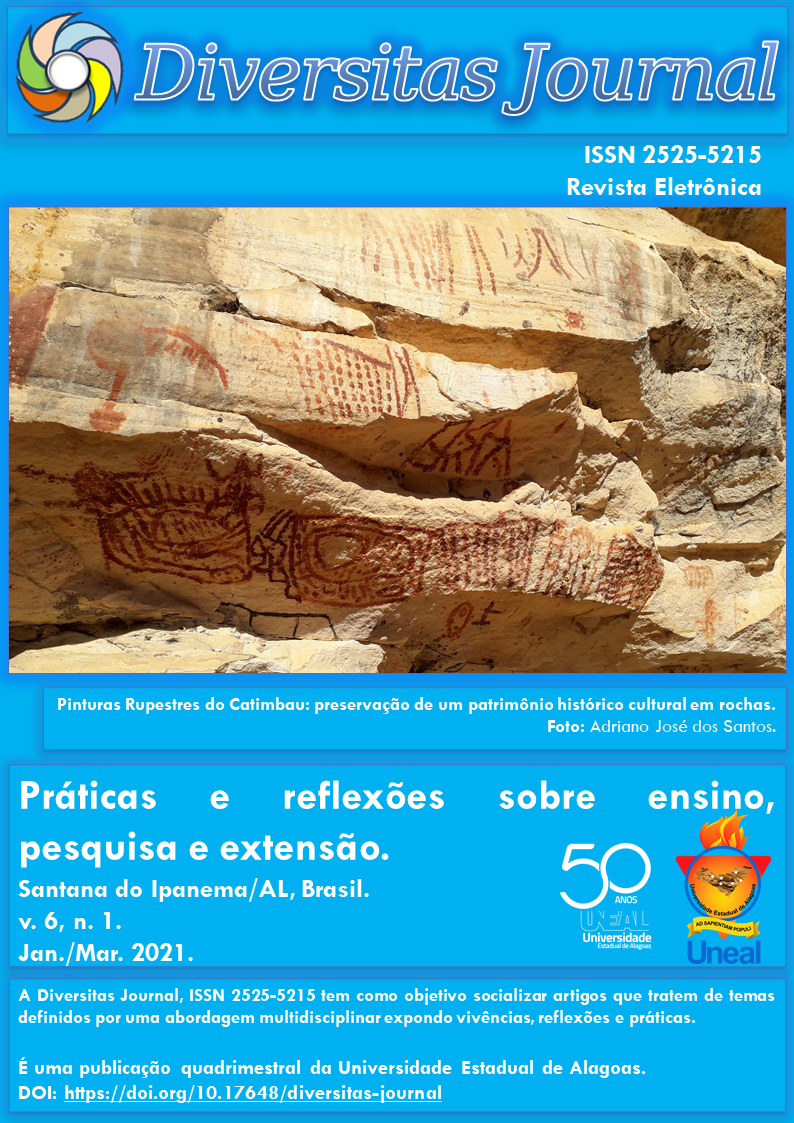Macrofauna do solo em área de vegetação espontânea em pomar de jurubeba Solanum paniculatum L. (Solanaceae)
DOI:
https://doi.org/10.17648/diversitas-journal-v6i1-1125Abstract
ABSTRACT: Soil fauna plays a major role in adjusting agricultural systems. Since the 1980s, studies have been carried out in Brazil as an indication of sustainable development of soil management. Has a great performance in the processes of decomposition, mineralization and humification of organic waste; immobilization and mobilization of macro and micronutrients. The objective was to compare the population of soil macrofauna in an area with spontaneous vegetation of jurubeba using different types of traps. This survey was carried out at the headquarters of the Arapiraca-AL Technological Agri-Food Complex, with an area of 240 m² using pitfall and TSBF traps, in an area of spontaneous planting of jurubeba (Solanum paniculatum L.). In the TSBF trap, four plots were used to count the macrofauna with the following depths: 0–5, 5-10, 10-15 and 15–20 cm deep. At the pitfall, five traps were installed on the ground that remained for five days. Taxonomic groups were identified in decreasing order of relative density at order and family level. Therefore, it can be observed in general that the orders of greatest prominence in relation to all categories were Hymenoptera (75%) and Coleoptera (58%), whereas the families that had the greatest amount were Formicidae with 176 and Gryllidae with 17.
KEYWORDS: Diversity, edaphic fauna, Soil management.
Metrics
Downloads
Published
How to Cite
Issue
Section
License
Copyright (c) 2021 Maria Jéssica dos Santos Cabral, Jéssika Silva de Lima, Rodrigo Almeida Pinheiro, Esmeralda Aparecida Porto Lopes

This work is licensed under a Creative Commons Attribution 4.0 International License.
The Diversitas Journal expresses that the articles are the sole responsibility of the Authors, who are familiar with Brazilian and international legislation.
Articles are peer-reviewed and care should be taken to warn of the possible incidence of plagiarism. However, plagiarism is an indisputable action by the authors.
The violation of copyright is a crime, provided for in article 184 of the Brazilian Penal Code: “Art. 184 Violating copyright and related rights: Penalty - detention, from 3 (three) months to 1 (one) year, or fine. § 1 If the violation consists of total or partial reproduction, for the purpose of direct or indirect profit, by any means or process, of intellectual work, interpretation, performance or phonogram, without the express authorization of the author, the performer, the producer , as the case may be, or whoever represents them: Penalty - imprisonment, from 2 (two) to 4 (four) years, and a fine. ”















.png)




